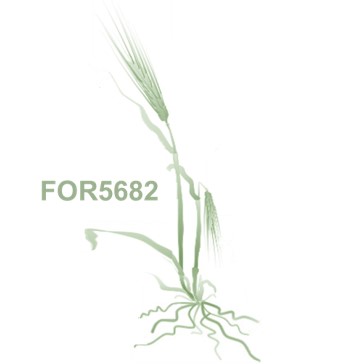Our Research
Plant immunity is governed by intricate physiological mechanisms that
enable plants to detect, respond to, and defend against a wide range of
pathogens. These defense strategies involve a coordinated network of
interactions and responses at both the cellular and molecular levels.
Our Lab is particularly interested in:
Cellular recognition mechanisms, including how immune receptor proteins detect pathogen-derrived signals.
Signal transduction pathways that link receptor-mediated recognition to host physiology.
Pathogen strategies for immune evasion and effector-mediated immune suppression.
To dissect the physiological processes that underpin plant immunity—and
how these are exploited by pathogens—we use the interaction between the
cereal crop barley (Hordeum vulgare) and the barley powdery
mildew fungus Blumeria hordei (Bh) as a primary model.
This system allows us to investigate how host-associated microbes
manipulate plant biology to establish successful infections. To broaden
our understanding of immune mechanisms across plant lineages, we
complement our work in barley with studies in established model systems
such as Arabidopsis thaliana and Nicotiana
benthamiana. This comparative approach enables us to explore both
conserved and lineage-specific features of immunity in monocots and
dicots, using a diverse array of fungal and bacterial pathogens that
interact with each plant type.
Here some examples of our ongoing projects:
Emmy Noether Project
Quantification of virulence function and identification of key residues

We investigate the virulence functions of Blumeria hordei
(Bh) avirulence (AVRA) effectors and
their naturally occurring variants that have lost avirulence activity
(AVRA-V). Specifically, we quantify how both
avirulent and virulent effector forms influence Bh
proliferation rates in host plants. In addition, we assess whether
AVRA effectors affect the growth of other
pathogens or influence disease outcomes in other plant species. This
approach allows us to determine whether avirulence and virulence
functions are linked or operate independently, whether the loss of
avirulence also compromises virulence, and whether effector functions
are conserved across different plant hosts.
CEPLAS & EN Project
Identification of intrinsic functions of effectors from cereal infecting fungal pathogens

Assigning biological functions to pathogen effectors is essential for
understanding the development of barley powdery mildew disease. To this
end, we biochemically identify the host targets of Bh
AVRA effectors within barley cells. We employ
state-of-the-art proximity-dependent protein labeling techniques to
capture in situ interactions, enabling us to characterize the molecular
context of AVRA effector activity and to elucidate
the biochemical pathways in which their host targets are involved.
SFB1403 Project
Identification of the host cell death pathways affected in the presence of Bh AVRA effectors

As an obligate biotroph, Bh depends on living host tissue for
its proliferation, making the suppression of host cell death crucial for
successful infection (Saur et al., 2021; Saur & Hückelhoven, 2021).
Interestingly, MLA immune receptors in barley recognize effectors from a
range of unrelated biotrophic pathogens, suggesting that the
AVRA effectors recognized by MLAs are strong
candidates for suppressing host cell death—either directly or
indirectly—to support Bh colonization. To explore this
hypothesis, we examine the ability of AVRA and
related virulence effectors to suppress various cell death pathways in
barley, providing insights into their potential role in promoting
biotrophic.
For5682 Project
The obligate biotrophic powdery mildew fungus - adaptation to the leaf epidermal cell niche by defending against other microbes

In this project, we investigate how Bh influences barley
colonization by other microbes—both directly through microbial
antagonism and indirectly by triggering physiological changes in the
host plant. Our focus lies on members of the native barley microbiota as
well as dominant microbial invaders with biotrophic or necrotrophic
lifestyles.
© Isabel Saur